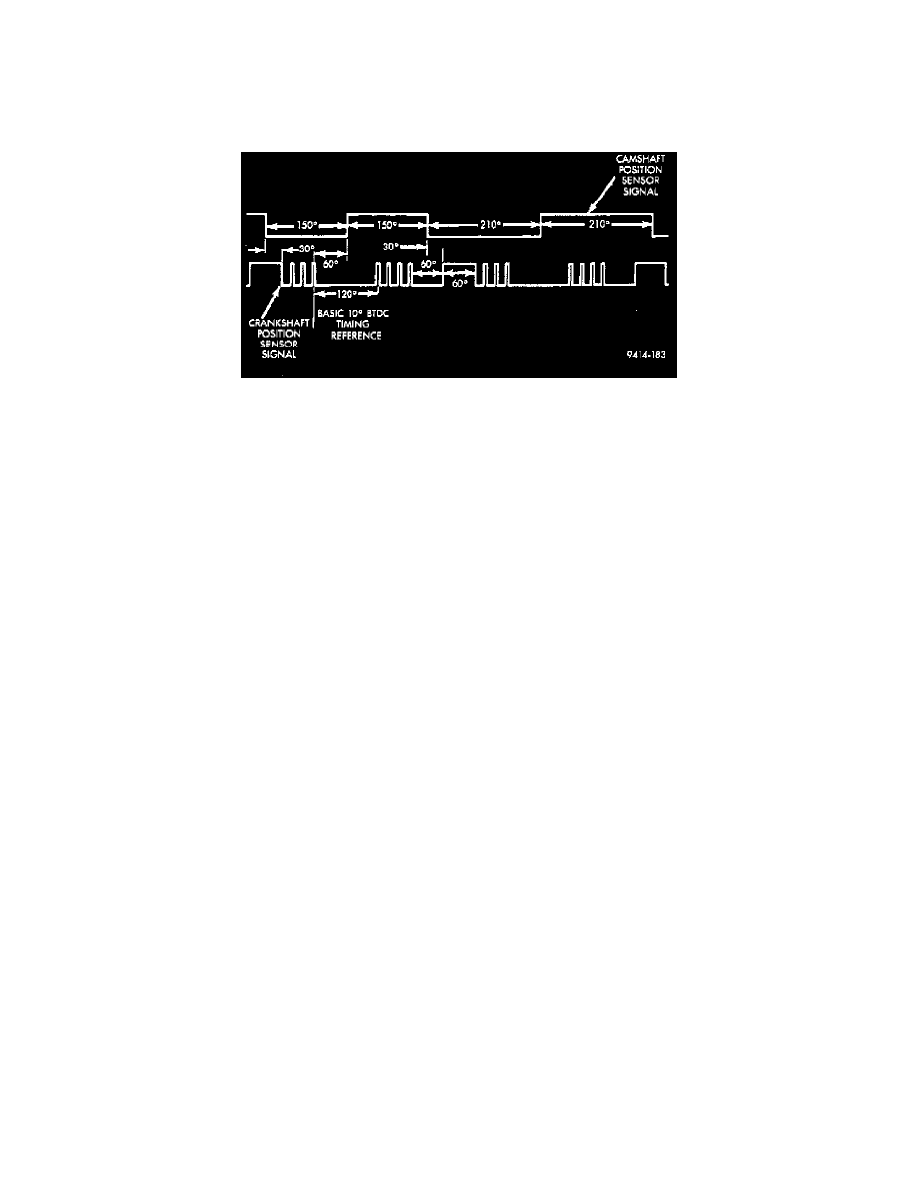Neon L4-2.0L VIN C (1998)

correct position. The target magnet has four different poles arranged in an asymmetrical pattern (Fig. 6). As the target magnet rotates, the camshaft
position sensor senses the change in polarity (Fig. 7).
The sensor output switch switches from high (5.0 volts) to low (0.30 volts) as the target magnet rotates.
-
When the north pole of the target magnet passes under the sensor, the output switches high.
-
The sensor output switches low when the south pole of the target magnet passes underneath.
Fig. 24 Square Wave Pattern In Crankshaft Degrees
Square Wave Output
The output voltage of a properly operating camshaft position sensor or crankshaft position sensor switches from high (5.0 volts) to low (less than
0.5 volts). By connecting an oscilloscope to the sensor output circuit, technicians can view the square wave pattern produced by the voltage swing
(Fig. 24).
If the camshaft position sensor and crankshaft position sensor don't produce a square wave pattern, check the 8-volt supply circuit that feeds both
sensors.
The sensor also acts as a thrust plate to control camshaft endplay.
